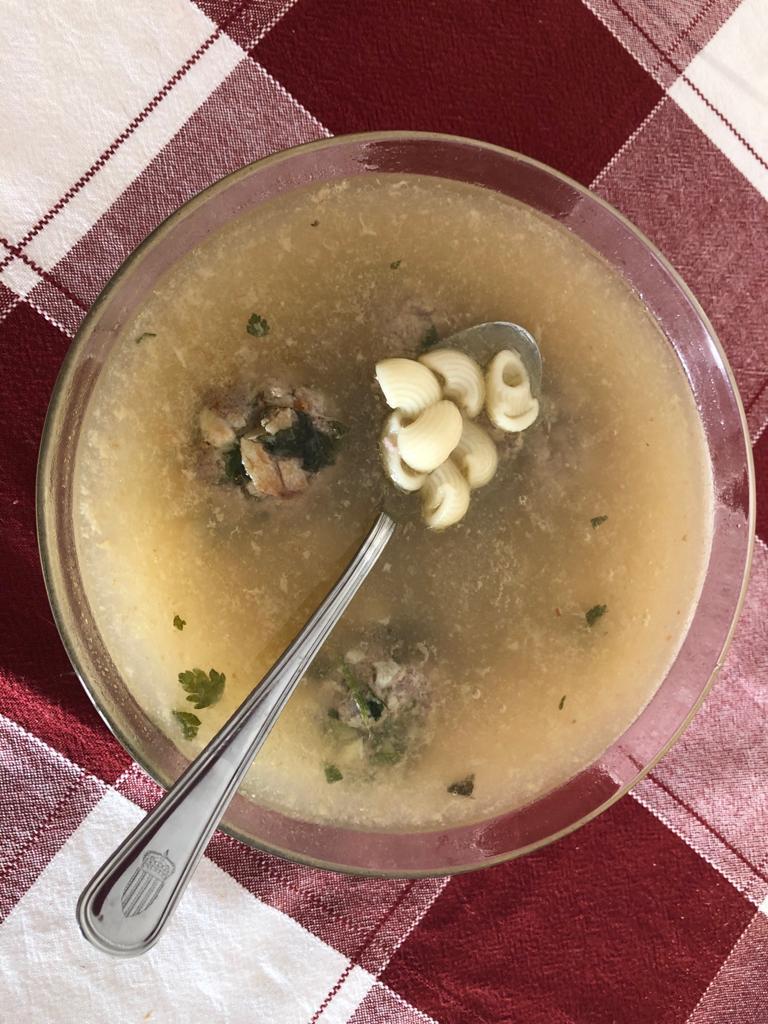Bone broth recipe. You can make it very easily.
First of all I want to make it clear that the purpose of this bone broth recipe is to take advantage of the nutritional value of the bones; we will get a medicinal broth that we can then use to prepare tasty dishes or incorporate into different recipes. I am going to explain the recipe, to explain why we carry out each of the steps, I will define its properties and I will offer alternatives of plating and/or incorporation to recipes. I also attach below a link to my instagram where you can see how I do the elaboration. Let’s start!
Beef bone broth
Ingredients:
- 700 or 1,000 grams of beef bones (we will choose marrow or femur). *Choose the cleanest bones, with the least amount of meat possible; organic and grass is the ideal choice.
- Low mineralization water (tap water NO!).
- Apple vinegar, lime juice, or lemon juice.
Utensils:
- Pot of 6 L.
- Spatula or fork (optional), strainer.
Procedure
- Preheat the pot to high heat.
- When the temperature is reached, place the bones and roast them slightly.
- Add water until it covers the bones. Then add apple vinegar or lime juice or lemon juice. Two squirts or two soup spoons.
- Lower the heat to medium (without boiling) and wait 20 minutes.
- Add the rest of the water until the pot is full. Turn down the heat so that it boils slowly.
- Leave it for 6 to 72 hours.
Video of the bone broth elaboration → Instagram stories
Explanation of the procedure
1,2 – Toasting is basically to give a touch of flavor to the broth.
3,4 – What we look for in these steps is to favor the osmotic transfer of minerals to the water, that is to say, we want the minerals from the bones to go into the broth that we will then drink. With the temperature we also facilitate (catalyze) this transfer.
5 – To respect the nutritional and therapeutic elements of the broth, we let it boil slowly.
6 – We must wait until the transfer of minerals, proteins, collagen, …, has been properly produced. The longer we leave it, the more nutritious the broth will be afterwards.
Benefits or properties
- Anti-inflammatory (modulating PKA and inhibiting COX-2). [1], [2], [3]
- Rich in collagen: beneficial for skin, hair and nails.
- Good content in vitamin D.
- Protein blend: glycine, proline, glutamine, leucine. Promoting the health of skin, joints, cartilage, intestines, detoxification, improving sleep quality, … [5]
- Promotes intestinal health: repairs the intestinal walls
- Helps in the maintenance and genesis of the musculoskeletal system.
- Increases the speed of mucus formation: useful in upper respiratory tract infections. [2]
- Adjuvant in the treatment of autism, ADHD, dyslexia, dyspraxia and schizophrenia. [2]
I have found many benefits to bone broth as it is made up of different protein complexes, vitamins and minerals. However, I had to corroborate if all those benefits they gave due to the content of these nutrients corresponded to the amounts they had of them, that is, I needed to know if the amount of glycine, proline, leucine, and glutamine were relevant to affirm that these amino acids really produced the effects attributed to them.
My conclusion
Is that with respect to collagen, gelatin, glycine, arginine, … the contents are conclusive. [4]
However, with respect to the minerals (Fe, Ca, Mg, …) I conclude that they are not present in sufficiently high quantities to highlight their short-term benefits, but in the interest of contributing something to the recommended daily amounts of these minerals, and thus favoring the benefits they are given.
For example, let’s suppose that we ingest a daily ration of bone broth of 200 mL, for one intake we would benefit above all from the collagen, the amino acids, the gelatin, … and from its intestinal properties. On the other hand if we consume it regularly (every day) we will obtain a synergic effect and we will be able to highlight the other components, since, a summary effect is produced. [2]
Are there other foods that produce these effects or contain these components in higher amounts?
Yes! there are other options. But the bone broth set is magnificent and for me it is one of the best options now in winter (I like hot broths, creams, stews, soups…). Therefore, I recommend it 100%.
Tinplate/Recipes
Below I share some images of the preparation of dishes I make with bone broth to give you some ideas. It can be added to almost any preparation:

Broth from bone broth recipe

Vegetable broth with bone broth

Ramen with bone broth

Rice and lentils with mustard and garlic sauce made with bone broth
And here you can see images of two of the studies on which I based my nutritional intake:
Links of interest
- https://www.ncbi.nlm.nih.gov/pubmed/29509826/
- https://www.ncbi.nlm.nih.gov/pmc/articles/PMC5533136/pdf/zfnr-61-1347478.pdf
- https://www.ncbi.nlm.nih.gov/m/pubmed/15709548/
- https://journals.humankinetics.com/doi/full/10.1123/ijsnem.2018-0139 Parts of the bone and amino acid levels.
- https://onlinelibrary.wiley.com/doi/full/10.1111/j.1479-8425.2007.00262.x





Trackbacks & Pingbacks
[…] leaf lettuce, asparagus, brown rice, green beans, spinach, lemons, pomegranate, ginger, mustard, bone broth, liver infused agar-agar gelatin, extra virgin olive oil (EVO), turmeric, chlorella, thistle. [7], […]
Leave a Reply
Want to join the discussion?Feel free to contribute!